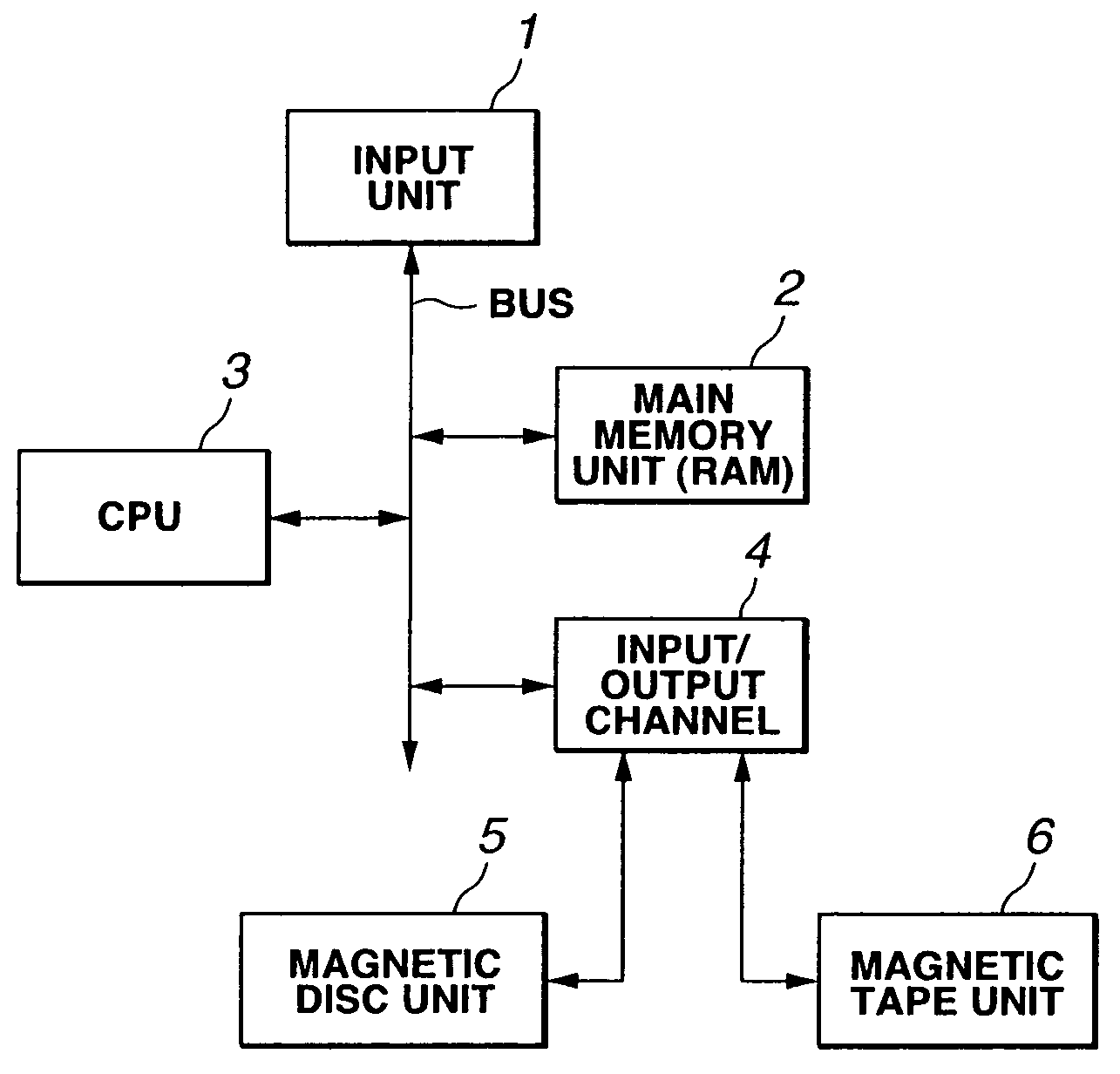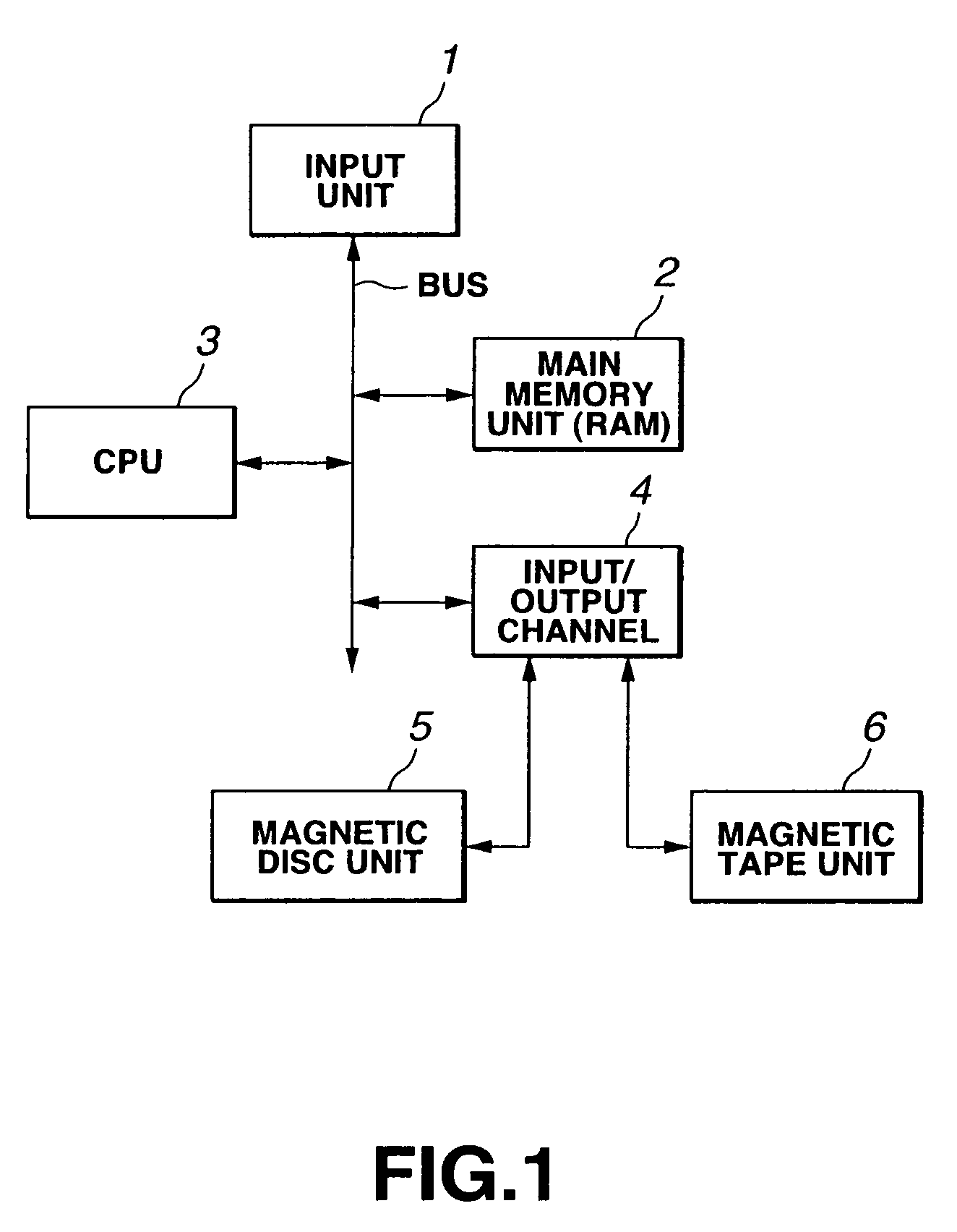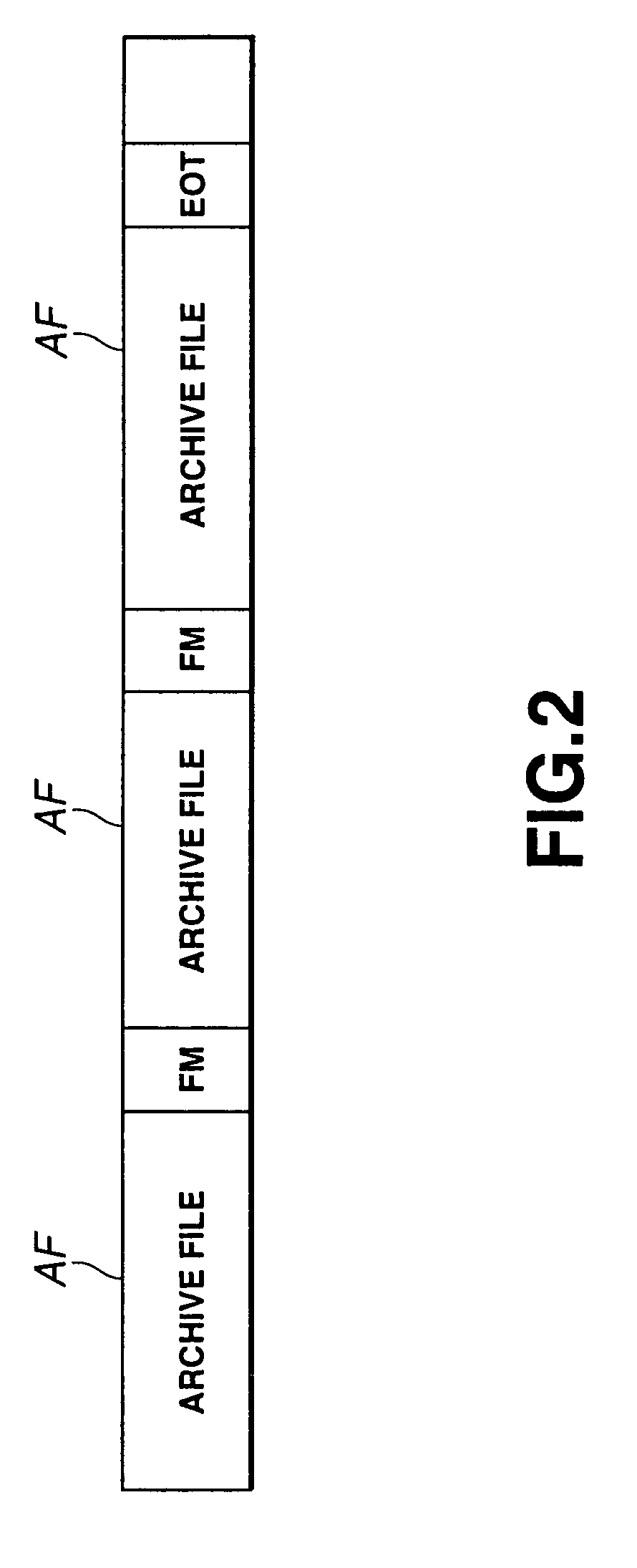Data recording device, data recording method, data reproducing device and data reproducing method
- Summary
- Abstract
- Description
- Claims
- Application Information
AI Technical Summary
Benefits of technology
Problems solved by technology
Method used
Image
Examples
Embodiment Construction
[0022]A data recording apparatus, a data recording method, a data reproducing apparatus and a data reproducing method according to this invention will now be described with reference to the attached drawings.
[0023]FIG. 1 is a block diagram showing a configuration of the data recording apparatus to which this invention is applied. As shown in this FIG. 1, an input unit 1 generates command input corresponding to keyboard operation or event input corresponding to mouse operation. A main memory unit 2 is comprised of, e.g., a RAM, and comprises a system area for storing a set of UNIX (Registered Trade Mark) system programs and a work area used as a work area of a CPU 3. The CPU 3 executes any one of the set of system programs stored in the system area of the main memory unit 2 in accordance with command (or event input)) from the input unit 1 to control respective units of the apparatus.
[0024]For example, the CPU 3 is operative so that when command input (or event input) for starting re...
PUM
 Login to View More
Login to View More Abstract
Description
Claims
Application Information
 Login to View More
Login to View More - R&D
- Intellectual Property
- Life Sciences
- Materials
- Tech Scout
- Unparalleled Data Quality
- Higher Quality Content
- 60% Fewer Hallucinations
Browse by: Latest US Patents, China's latest patents, Technical Efficacy Thesaurus, Application Domain, Technology Topic, Popular Technical Reports.
© 2025 PatSnap. All rights reserved.Legal|Privacy policy|Modern Slavery Act Transparency Statement|Sitemap|About US| Contact US: help@patsnap.com



